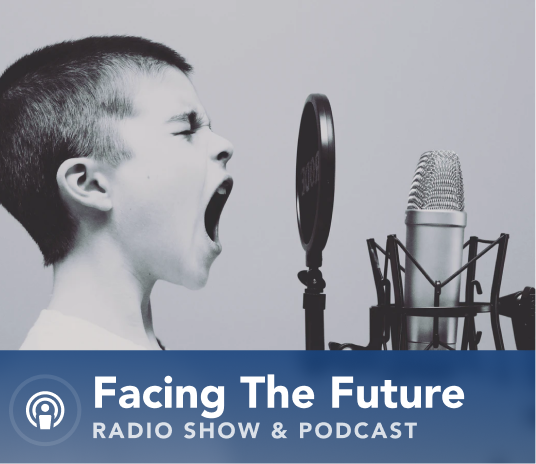This week on Facing the Future, we have a special edition of the program featuring excerpts from a recent panel discussion at the Warren B. Rudman Center for Justice, Leadership, and Public Service at the University of New Hampshire’s Franklin Pierce School of Law. The virtual forum focused on our national debt outlook and changing views on the role of government, two years into the pandemic.
Participating in the discussion were two national experts on Congressional budget and fiscal policy, Brian Riedl of the Manhattan Institute and Wendy Edelberg of The Brookings Institution. Moderating the program was award winning journalist and author Laura Knoy, who for 25 years hosted a daily live public affairs program called “The Exchange” on New Hampshire Public Radio. This is one of several events The Concord Coalition is putting together across the country to mark our 30th anniversary.
Reidl opened the program by putting the current national debt into context. Debt held by the public is now equivalent to our entire gross domestic product (GDP).
“It comes to about $177,000 per household. That’s a scary number,” said Riedl. “You’re not going to be paying back the full $177,000 per household. You’re really not going to pay back the debt, but you are on the hook for the interest on the debt. In terms of putting the debt in its context, it was 100% of the economy at the peak of WWII, then it dropped to about 23% of the economy by the mid 1970s and was still only about 40% of the economy before the Great Recession started. It has since spiked from 40% to100% of the economy just since the Great Recession started in 2008.”
Riedl says just having the federal government run on auto-pilot, with growing health care costs, an older population, and budget deficits forecasted for the next 30 years, will most likely result in the size of the debt doubling relative to the size of the economy.
Many of the spikes in debt in the last 15 years have resulted from major economic crises such as the Great Recession and the COVID-19 pandemic. Edelberg said during that time we have learned two important lessons.
“Interest rates are a lot lower than we projected they would be,” said Edelberg. “So whatever concerns we had about the cost of financing federal borrowing, we should have fewer concerns than we did before.”
“The other thing that we learned,” she continued, “ is that as much as we might have been worried about a fiscal crisis – when countries all of a sudden abruptly face much higher interest rates or see big reductions in the value of their currency because investors no longer want to lend to them – it turns out that investors really have stuck with us, and I think when all is said and done, a lot of those fears were overblown.”
Though Riedl said low interest rates may have bought us a 10-15 year buffer before the growing debt might start to become a problem felt by average Americans, interest rates are now starting to rise. He warned that having a national debt closer to 200% of GDP could result in lower federal benefits for programs such as Medicare and Social Security, higher taxes to service the debt, and inflation even higher than what we are seeing today over the long term.
Still, the government greatly expanded its role through higher spending in response to the unprecedented economic and public health crisis during the COVID-19 pandemic, financing that through borrowing. Edelberg said some of those changes might be here to stay because they boost our economy and productivity while not truly causing great concern over debt.
“We learned a lot about effective ways to expand the unemployment insurance system, which was woefully inadequate before the pandemic,” said Edelberg. “Even though we also learned a lot about how we need to fix the unemployment system, the very significant expansions of who is eligible worked remarkably well, given that we were driving the bus and fixing the bus at the same time. The other thing that we learned about is that we can alleviate poverty through the social insurance system pretty directly. Making the child tax credit fully refundable did extraordinary good in reducing child poverty rates even in the midst of an economic crisis. I hope that policy makers take a lesson from that for the future.”
Reidl agreed that the main lesson learned coming out of the pandemic is that the next time the country hits a major economic recession, expect the federal government response to be enormous. Though he cautions that with baseline budget deficits growing, those major responses to crises might need a major tax bill attached to pay for them.
Hear more on Facing the Future. I host the program each week on WKXL in Concord N.H., and it is also available via podcast. Join me and my guests as we discuss issues relating to national fiscal policy with budget experts, industry leaders, and elected officials. Past broadcasts are available here. You can subscribe to the podcast on Spotify, Pandora, iTunes, Google Podcasts, Stitcher, or with an RSS feed. Follow Facing the Future on Facebook, and watch videos from past episodes on The Concord Coalition YouTube channel.
You can watch the entire webinar “Two Years In: The Debt, the Pandemic, and Changing Views of Government” below:





